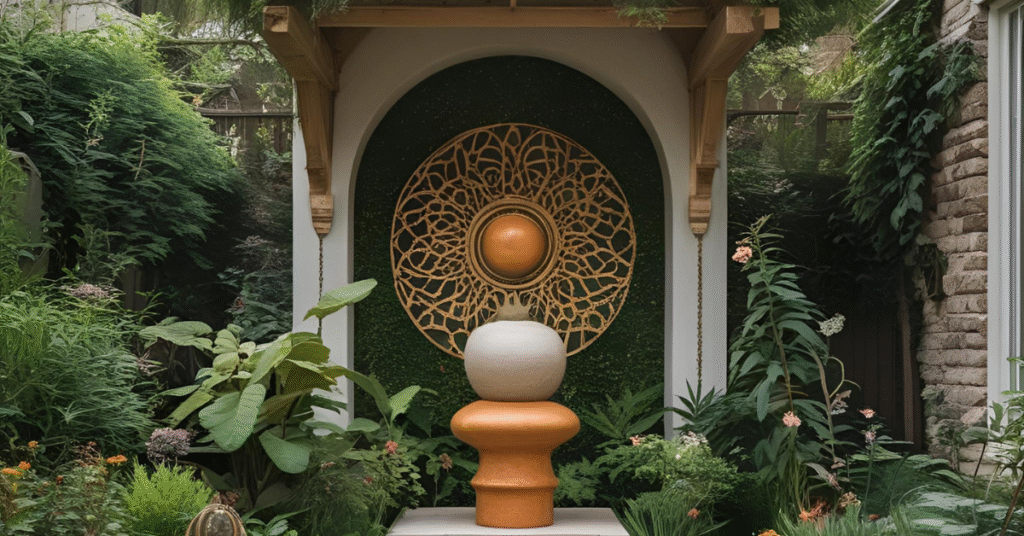Creating stunning garden designs doesn’t have to be overwhelming. Whether you’re working with a small backyard, dreaming of a circular lawn, or planning a cottage-style outdoor space, this comprehensive guide provides practical, research-backed advice to transform any area into a beautiful garden that thrives year-round.
Garden Design Evolution: A Visual Timeline
Understanding how garden designs transform over time helps you plan better and set realistic expectations. Here’s what to expect during your garden’s journey from planning to full maturity.
Month 1-2: Planning & Preparation
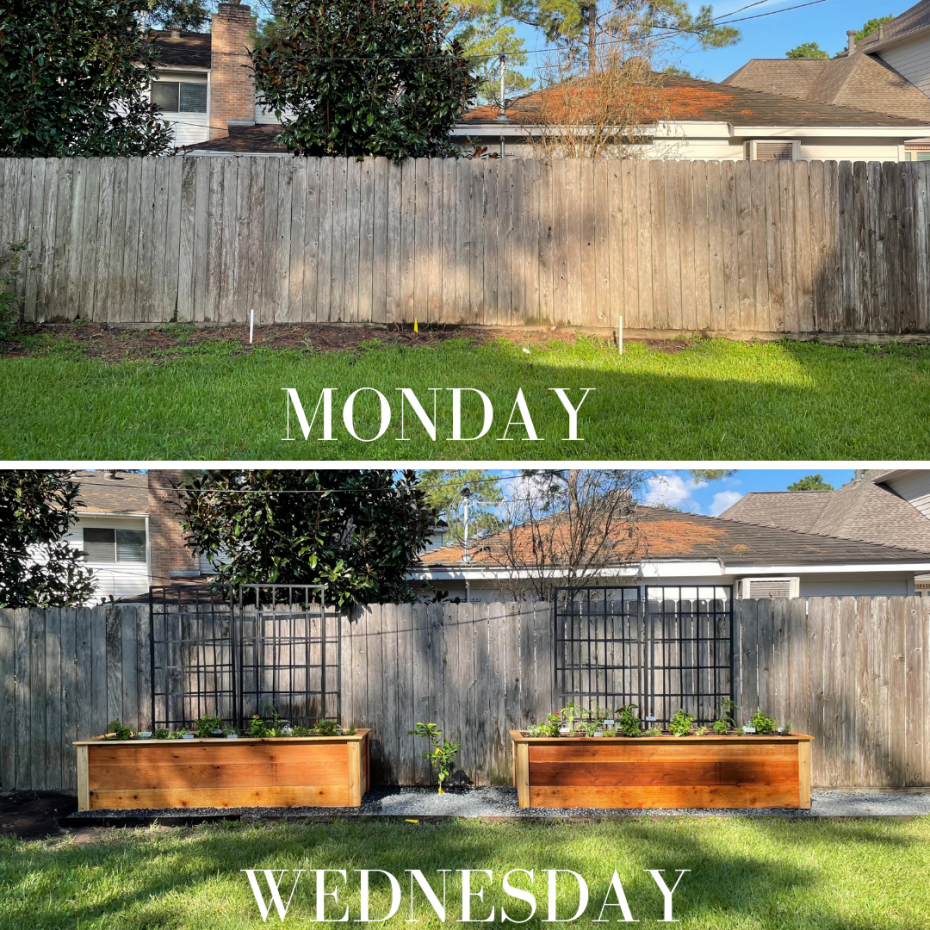
- Site analysis and soil testing
- Design sketching and plant selection
- Budget planning and material sourcing
Month 3-6: Implementation
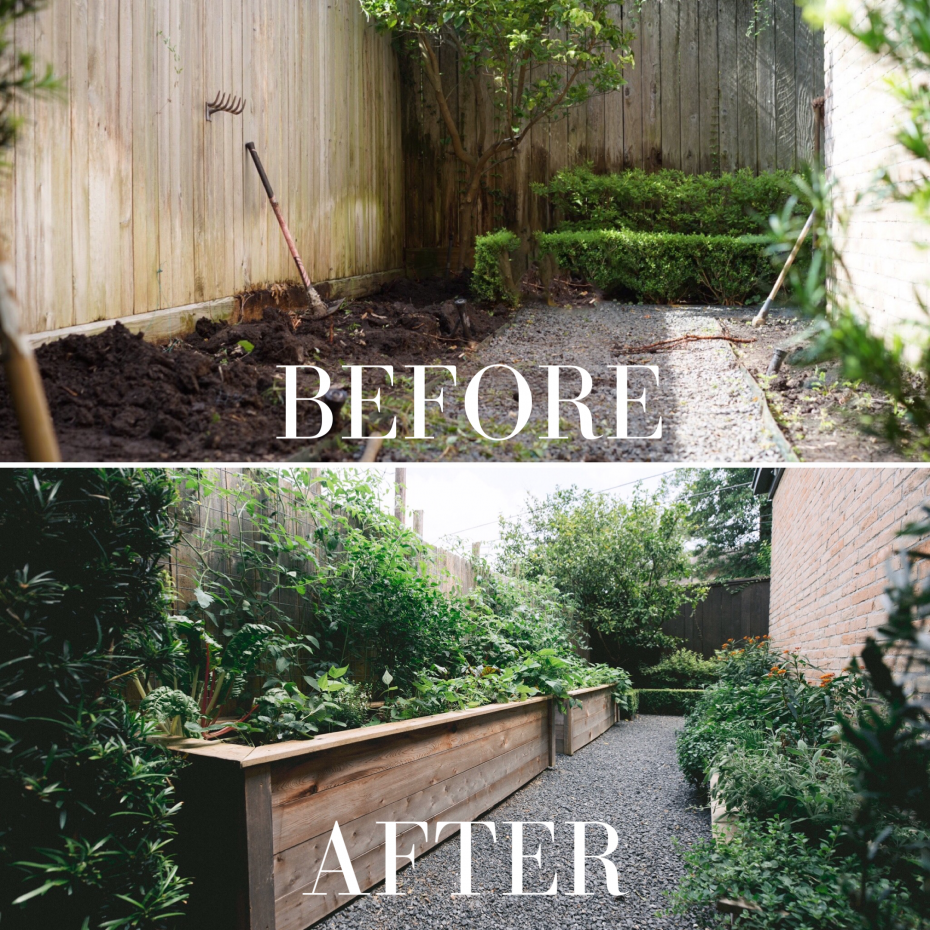
- Hardscaping installation (paths, borders)
- Planting trees, shrubs, and perennials
- Irrigation system setup
Year 1-2: Establishment
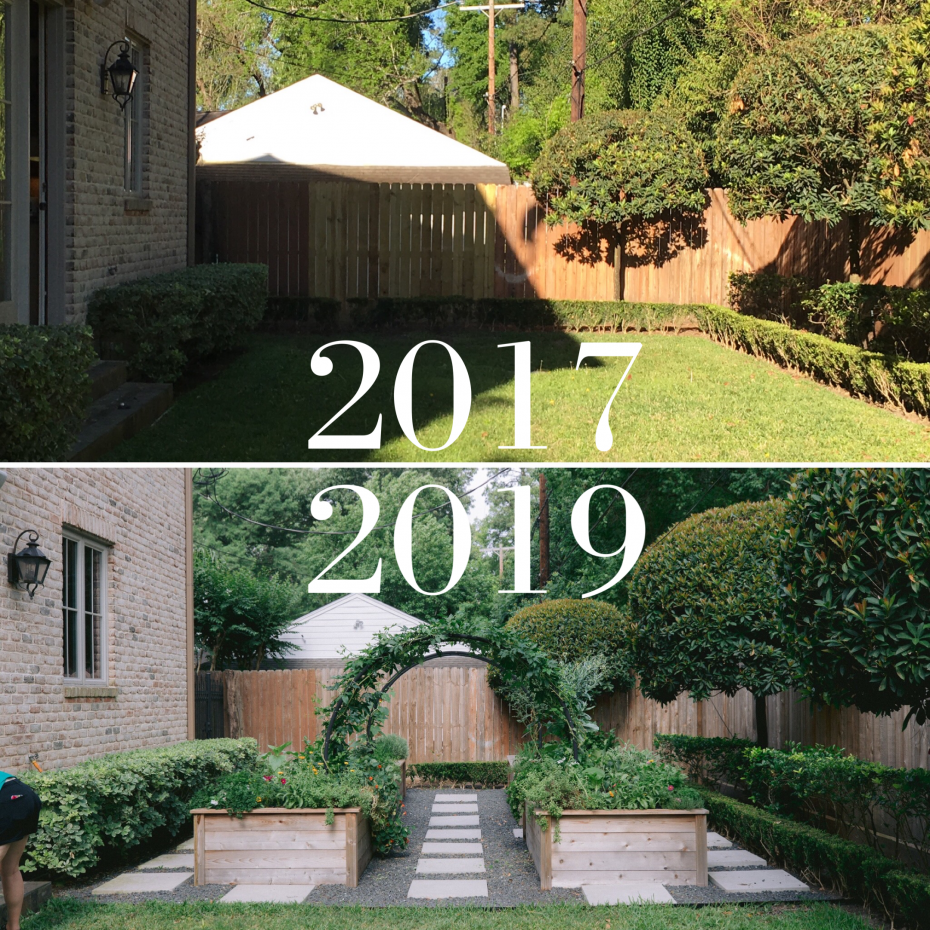
- Plants establishing root systems
- Regular watering and maintenance
- Seasonal adjustments and replacements
Year 3+: Mature Garden
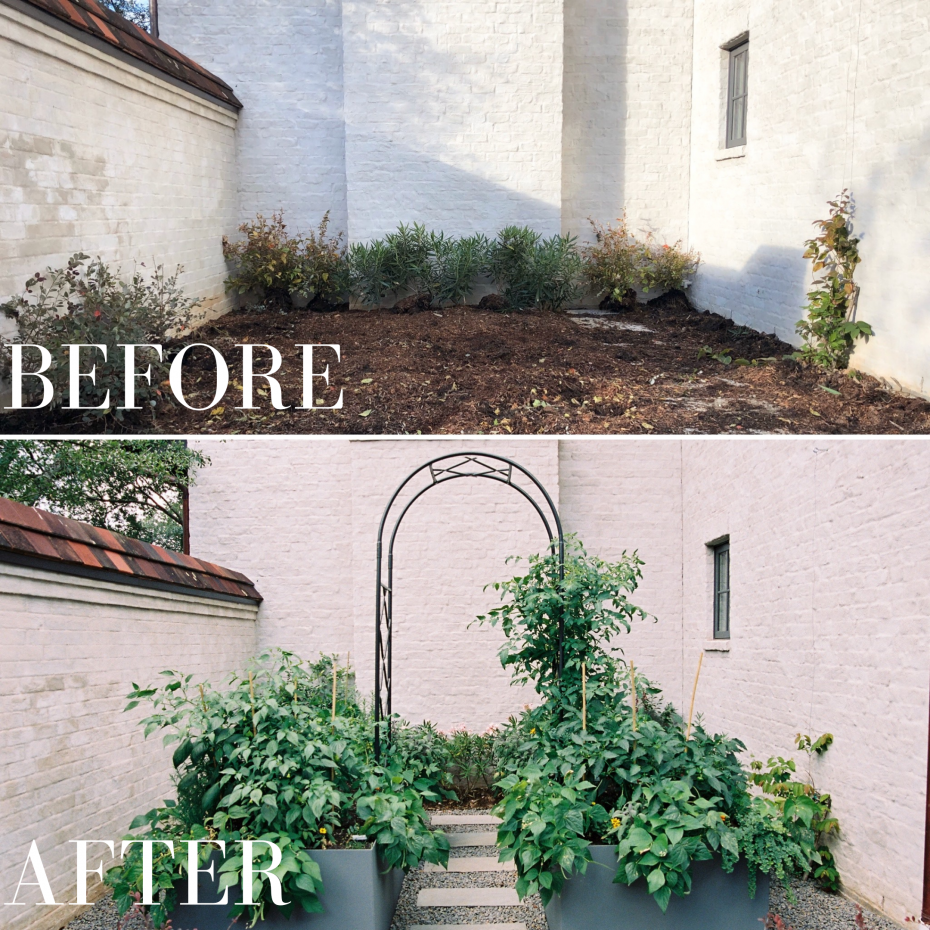
- Full design vision realized
- Reduced maintenance requirements
- Ecosystem fully developed
Step-by-Step Garden Design Process
Professional Tip: Successful garden designs start with careful planning. Follow these proven steps to create outdoor spaces that thrive in your specific climate and meet your family’s needs.
1. Site Analysis & Measurements
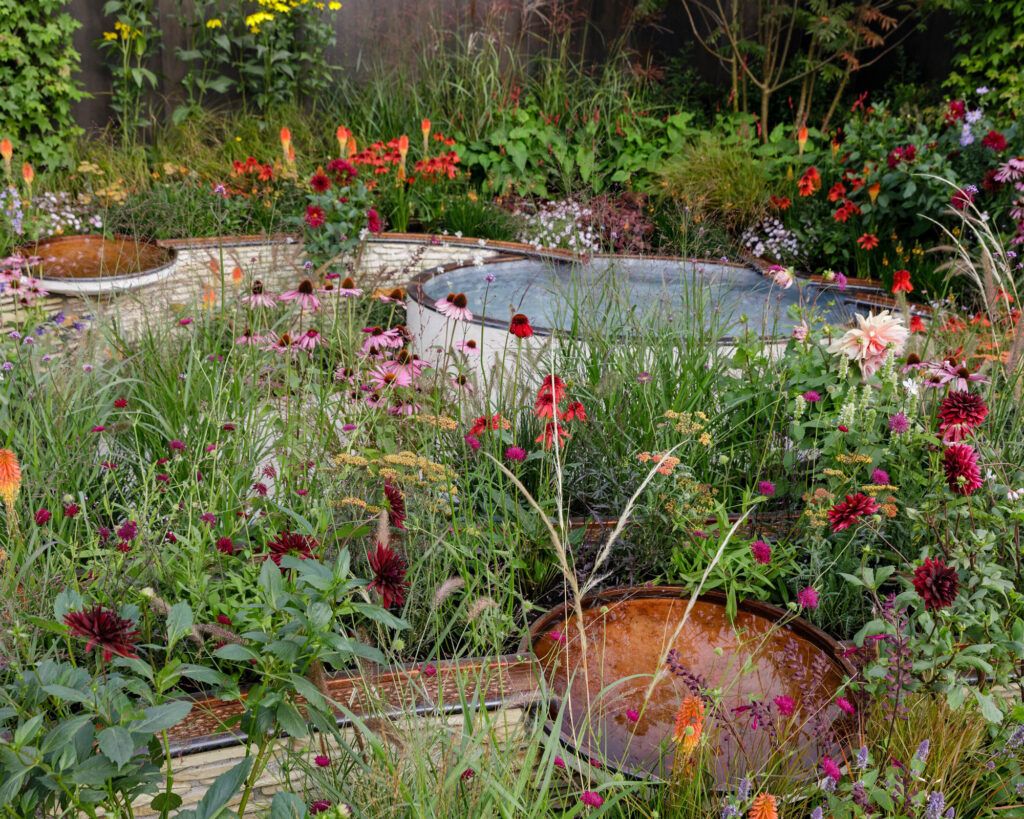
- Track sunlight patterns – Note areas that receive full sun (6+ hours), partial sun (3-6 hours), and shade
- Check drainage – Identify low spots where water collects and areas that drain quickly
- Measure precisely – Create accurate dimensions of your space using a measuring tape
- Test soil – Determine pH levels and soil composition for better plant selection
2. Define Your Garden’s Purpose
Food Production
Vegetables, herbs, fruit trees
Entertainment
Gathering spaces, outdoor dining
Wildlife Habitat
Native plants, pollinator gardens
3. Create Your Design Layout
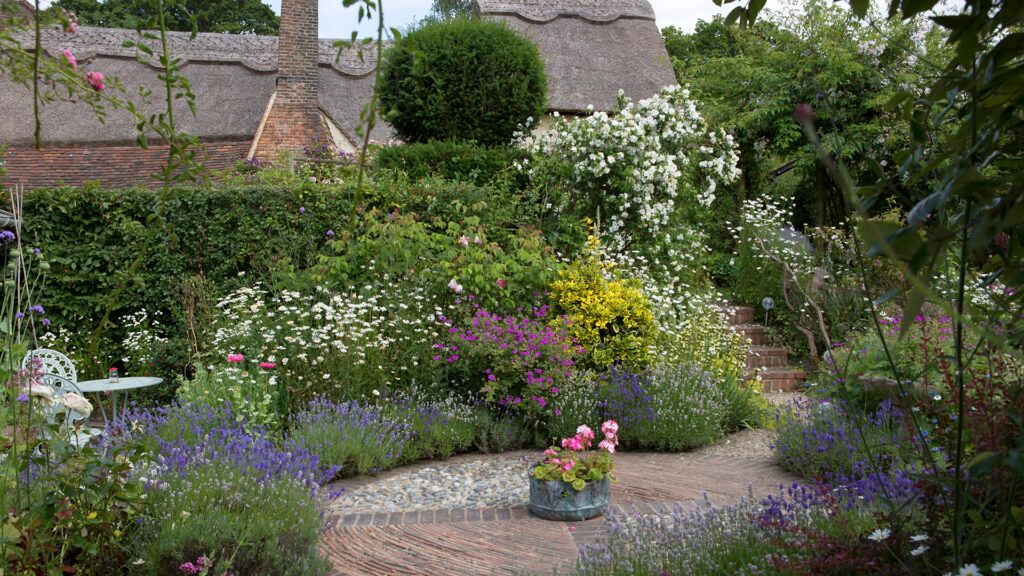
Pro Tip: Start with major elements like trees and hardscaping, then add layers of shrubs, perennials, and annuals. This creates depth and structure in your garden design.
- Sketch your space on graph paper (1 square = 1 foot)
- Position largest elements first (trees, structures, major paths)
- Consider circular lawn designs for visual interest and easier maintenance
- Plan for mature plant sizes to avoid overcrowding
4. Select Plants & Materials
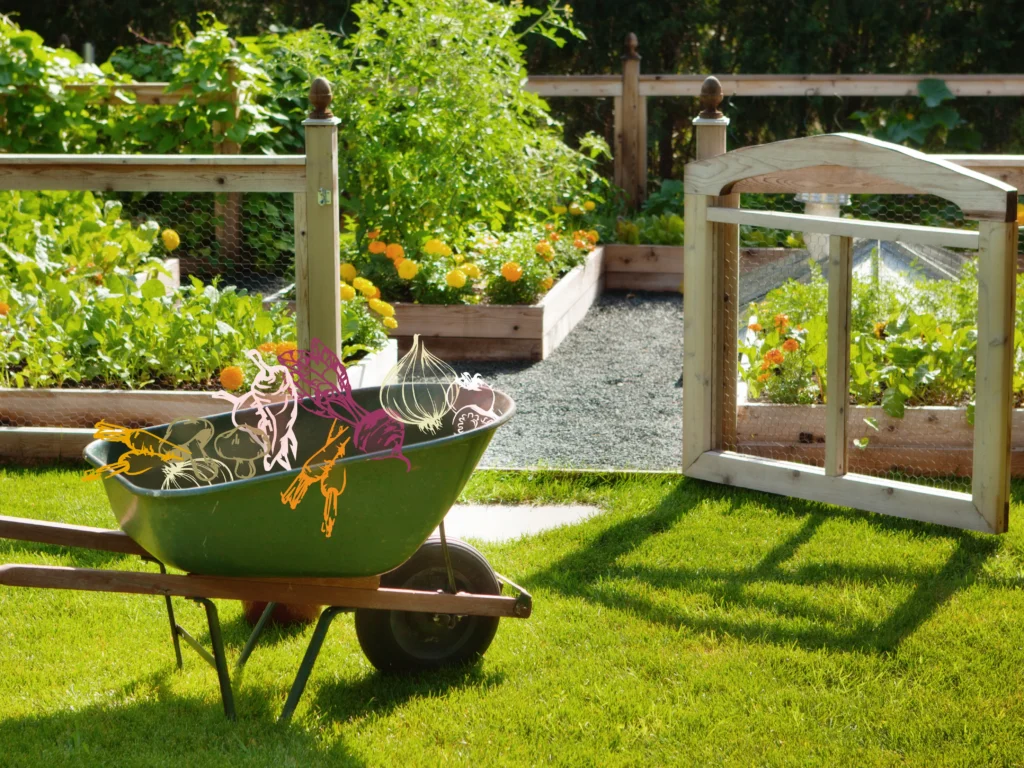
Plant Selection Criteria:
- Climate zone compatibility
- Water requirements
- Mature size and growth rate
- Bloom times for continuous color
- Maintenance needs
Material Considerations:
- Weather resistance
- Local availability
- Budget constraints
- Aesthetic compatibility
- Environmental impact
8 Popular Garden Design Styles for 2025
Choosing the right style for your garden design depends on your personal preferences, climate, and available space. Here are the most popular approaches that work beautifully in various settings.
Circular Lawn Garden Design

Circular lawn designs create stunning focal points and improve traffic flow. Perfect for both small and large spaces, this approach offers a modern yet timeless aesthetic.
Best for: Modern homes, entertaining spaces, easy maintenance
Key features: Central lawn circle, radiating planting beds, curved pathways
Maintenance: Medium – regular lawn care, seasonal bed updates
Cottage Garden Design
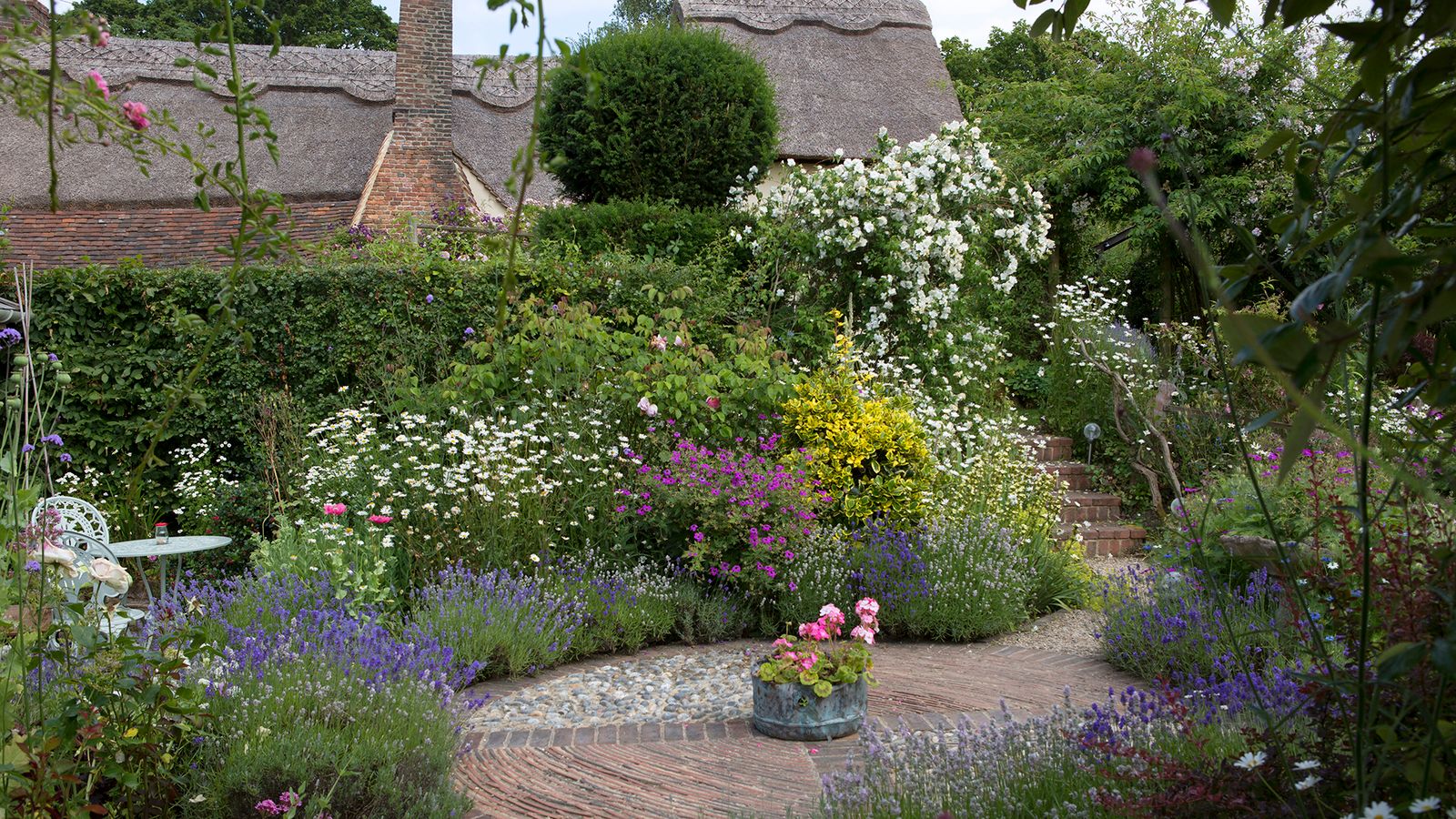
Romantic and informal, cottage gardens blend vegetables, herbs, and flowers in a charming, seemingly effortless design that attracts beneficial insects and creates year-round interest.
Best for: Traditional homes, wildlife lovers, mixed-use gardens
Key features: Dense plantings, climbing roses, herb integration
Maintenance: Medium-high – regular pruning, seasonal replanting
Modern Minimalist Design
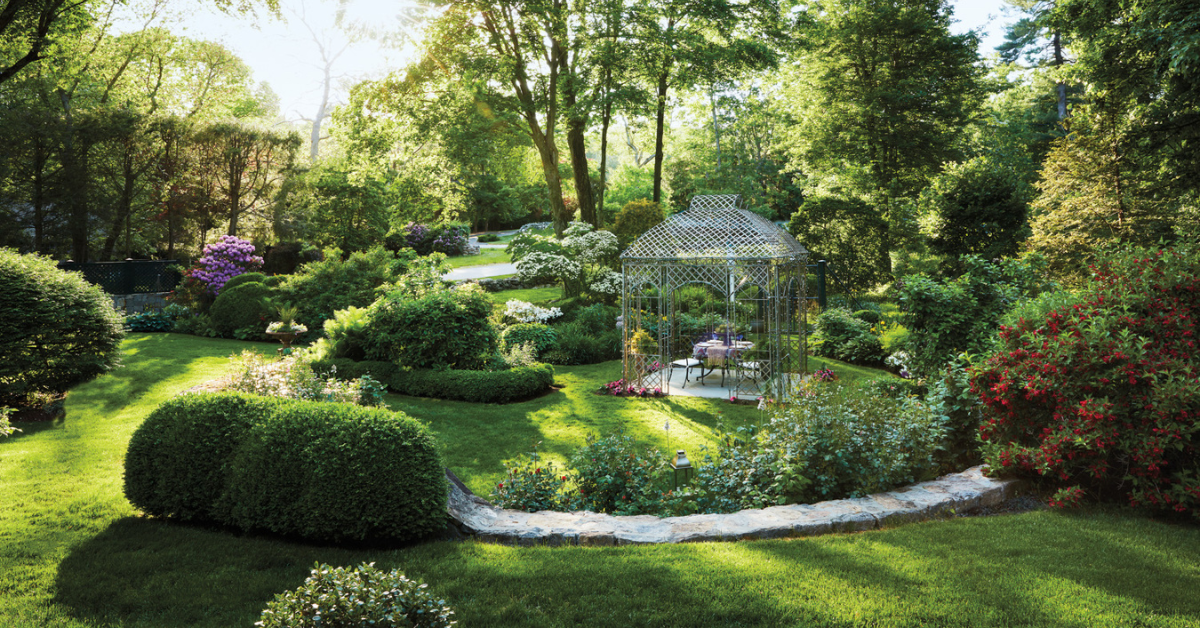
Clean lines, limited plant palette, and architectural elements define modern garden designs. Emphasizes structure and form over ornate details.
Best for: Contemporary homes, busy lifestyles, small spaces
Key features: Geometric shapes, ornamental grasses, hardscaping
Maintenance: Low – drought-tolerant plants, minimal pruning
Small Space Container Design
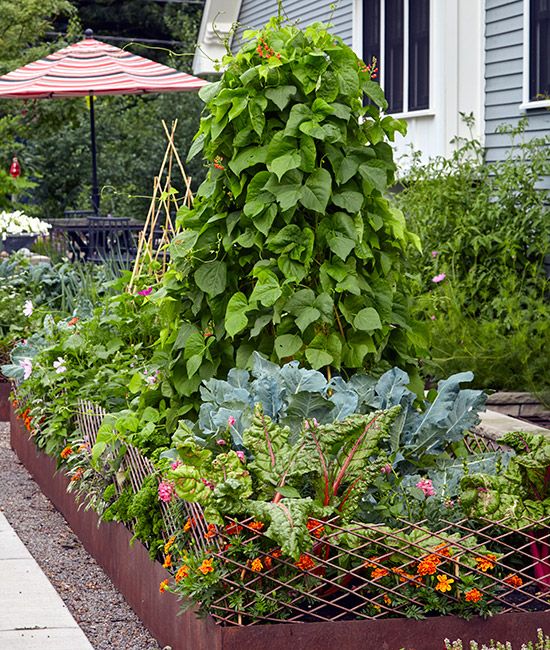
Maximize small gardens with vertical growing, container combinations, and multi-functional plants. Perfect for apartments, condos, and rental properties.
Best for: Apartments, renters, balconies, patios
Key features: Vertical planters, mobile containers, compact varieties
Maintenance: Medium – frequent watering, container rotation
Mediterranean Style Design
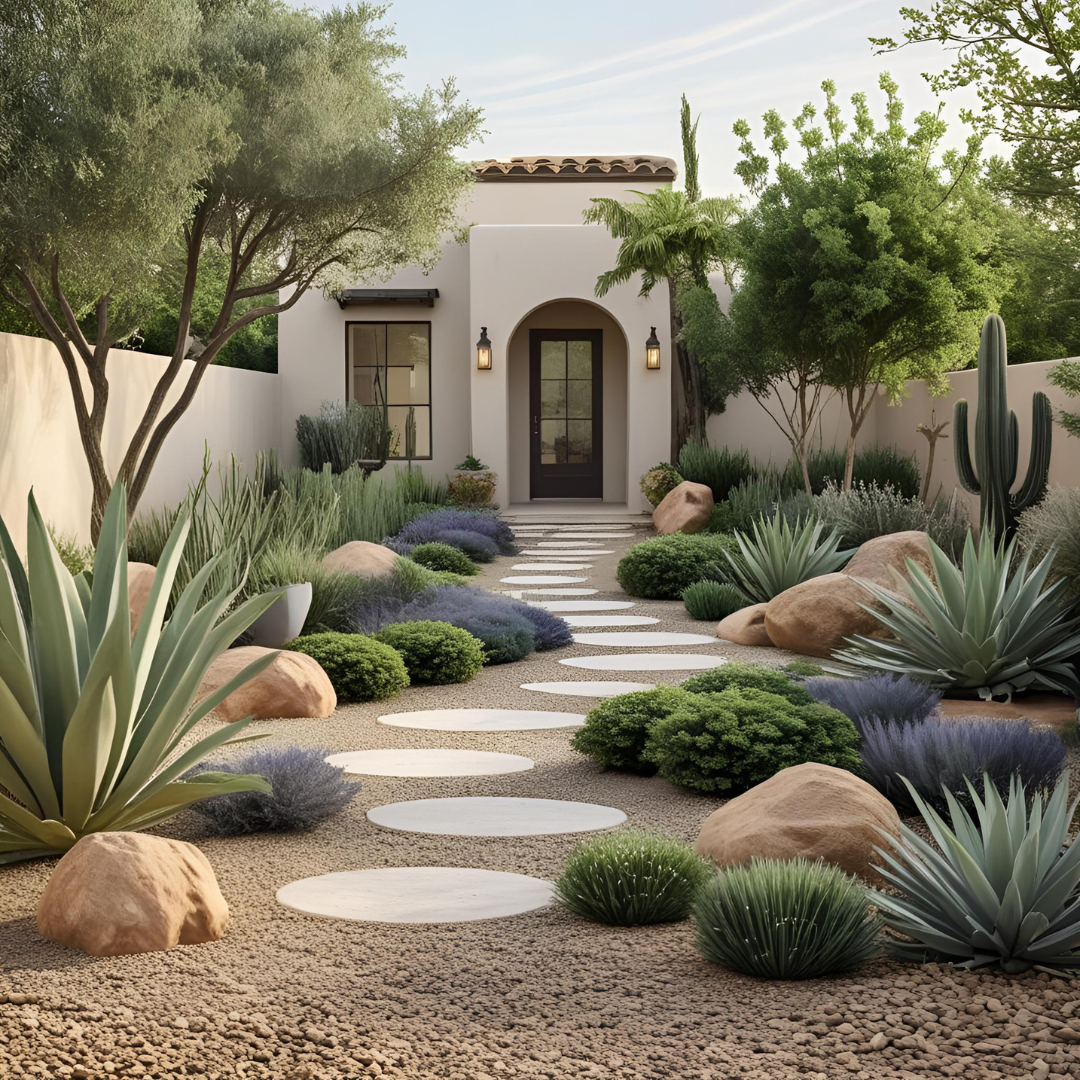
Drought-tolerant plants, gravel pathways, and terra cotta elements create a warm, inviting atmosphere. Excellent for water-wise landscaping in sunny climates.
Best for: Dry climates, water conservation, herb gardens
Key features: Olive trees, lavender, gravel mulch, terracotta pots
Maintenance: Low – drought-tolerant, minimal water needs
Native Wildlife Garden Design
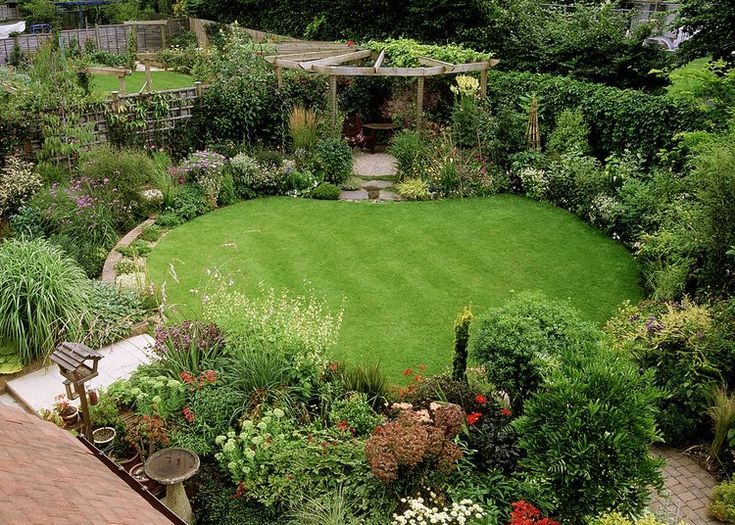
Focus on native plants that support local ecosystems. Creates habitat for birds, butterflies, and beneficial insects while requiring minimal inputs.
Best for: Environmental stewardship, low maintenance, education
Key features: Native plants, bird feeders, natural materials
Maintenance: Very low – self-sustaining ecosystem
Productive Vegetable Garden Design
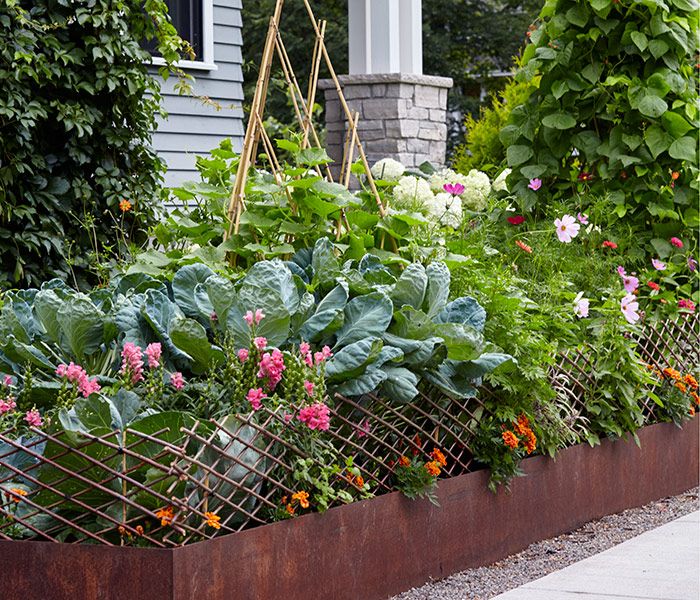
Combine beauty and function with ornamental vegetables, herbs, and flowers. Raised beds and efficient layouts maximize production in limited space.
Best for: Food production, self-sufficiency, family gardens
Key features: Raised beds, succession planting, companion planting
Maintenance: High – regular harvesting, seasonal replanting
Formal Garden Design
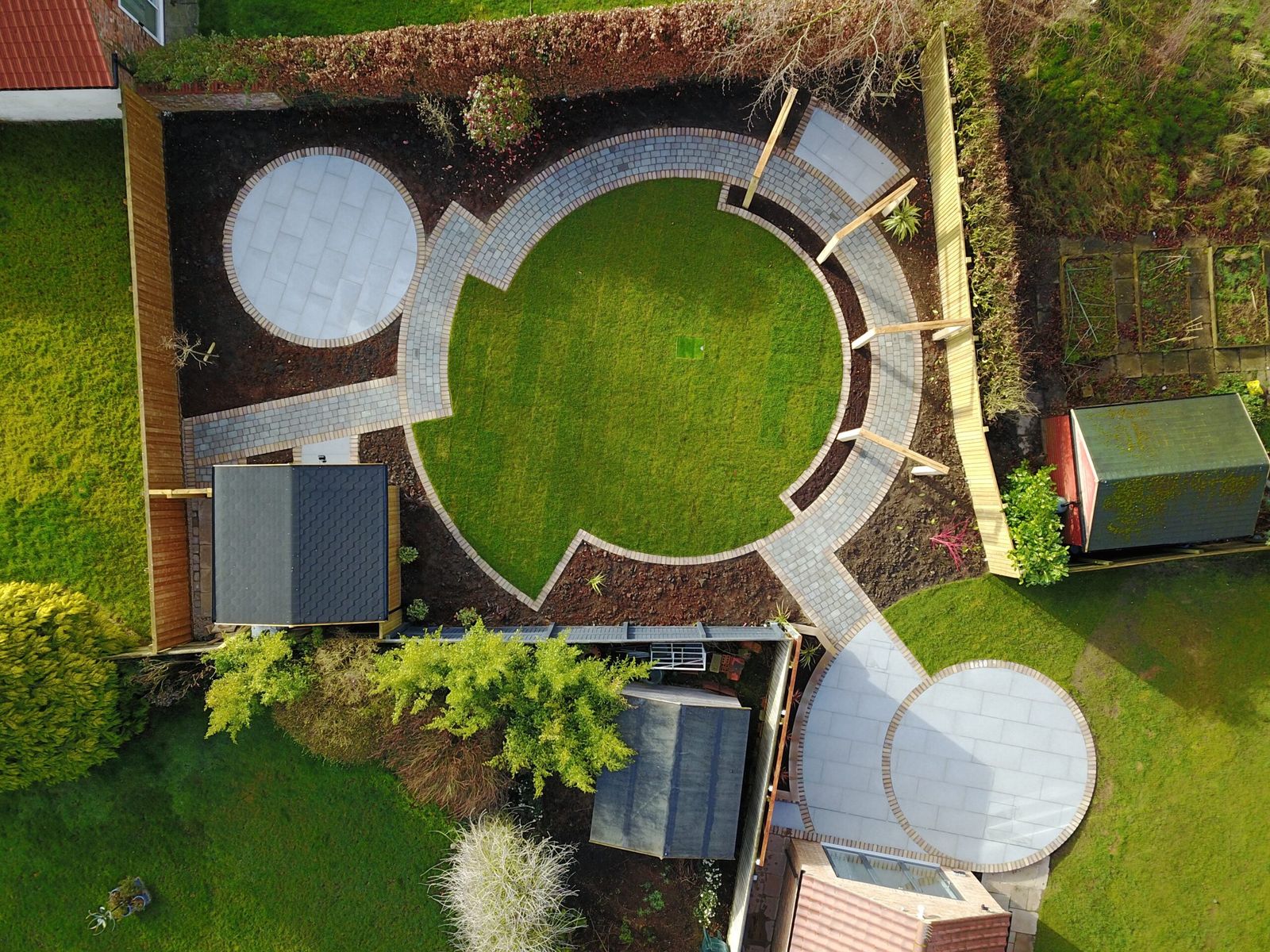
Symmetrical layouts, geometric shapes, and precisely maintained plants create elegant, classical garden designs perfect for traditional architecture.
Best for: Traditional homes, entertaining, prestige landscapes
Key features: Symmetry, topiary, formal pathways, water features
Maintenance: High – frequent pruning, precise care
Adapting Garden Designs to Your Climate
Climate Reality: Successful garden designs must work with your local weather patterns, not against them. Understanding your specific challenges helps you choose the right plants and design strategies.
Hot & Dry Climate Solutions
Design Strategies:
- Create shade with pergolas or shade sails
- Use light-colored hardscaping to reflect heat
- Design circular lawn areas for efficient irrigation
- Group plants by water needs (hydrozoning)
Recommended Plants:
- Drought-tolerant natives (varies by region)
- Mediterranean herbs (rosemary, thyme, lavender)
- Succulents and ornamental grasses
- Deep-rooted trees for natural cooling
Cold Climate Adaptations
Winter Protection:
- Choose wind-resistant plant varieties
- Install windbreaks with evergreen trees
- Use mulch to protect plant roots
- Design with four-season interest in mind
Cold-Hardy Options:
- Native conifers for structure
- Hardy perennials with winter interest
- Deciduous trees with attractive bark
- Early-blooming bulbs for spring color
Wet Climate Management
Drainage Solutions:
- Install raised beds for better drainage
- Create rain gardens in low-lying areas
- Use permeable paving materials
- Grade properly to direct water flow
Moisture-Loving Plants:
- Bog plants for consistently wet areas
- Native ferns for shaded spots
- Water-tolerant grasses and sedges
- Trees adapted to seasonal flooding
Windy Location Strategies
Wind Protection:
- Plant windbreaks of graduated heights
- Use flexible plants that bend rather than break
- Secure structures and containers properly
- Create microclimates with built barriers
Wind-Tolerant Choices:
- Native grasses that move gracefully
- Low-growing, mat-forming plants
- Trees with flexible branching patterns
- Shrubs with deep root systems
Essential Tools & Materials for Garden Design
Planning & Design Tools
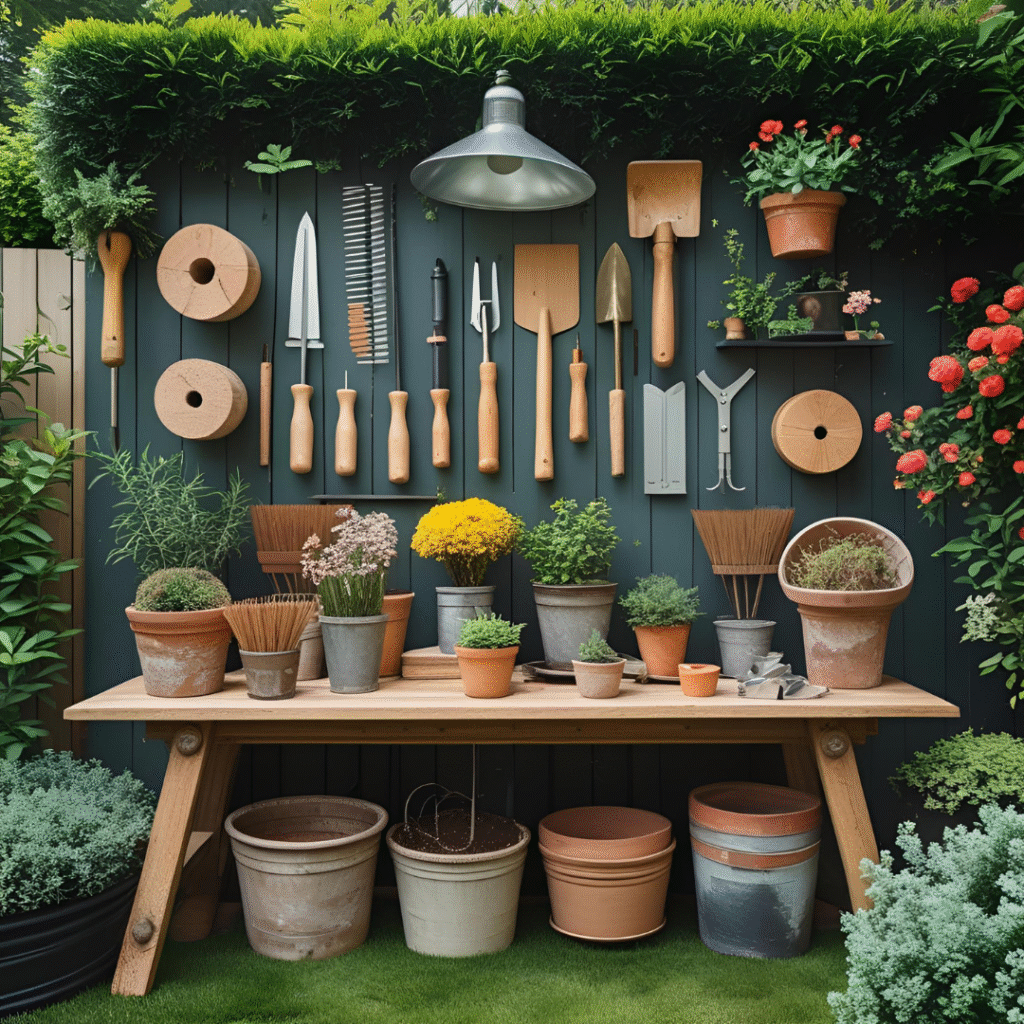
Measuring Tape (100+ feet)
For accurate site measurements and layout
Graph Paper & Pencils
Create scale drawings (1 square = 1 foot)
Landscape Marking Paint
Mark plant locations and design boundaries
Camera or Smartphone
Document existing conditions and progress
Construction & Planting Tools
Quality Spade & Shovel
For digging planting holes and moving soil
Pruning Shears
Clean cuts for healthy plant establishment
Garden Hose & Watering Equipment
Proper irrigation for plant establishment
Work Gloves
Protect hands during planting and construction
Hardscaping Materials
Natural Stone or Pavers
For pathways, patios, and design structure
Wooden Elements
Benches, trellises, raised bed borders
Mulch & Gravel
Moisture retention and weed suppression
Quality Soil & Compost
Foundation for healthy plant growth
Budget-Friendly Alternatives
Money-Saving Tip: Start with basic tools and upgrade as your gardening skills develop. Many expensive tools can be rented for occasional use.
• Free materials: Collect fallen branches for rustic borders
• Plant swaps: Trade with neighbors for variety
• DIY solutions: Build simple structures from reclaimed materials
• Gradual development: Complete your garden design in phases
Frequently Asked Questions About Garden Designs
How long does it take to complete a garden design project?
Most garden design projects take 3-6 months from planning to initial completion, but this varies significantly based on scope and complexity. Simple layouts with container plants can be finished in weeks, while extensive landscaping with mature trees may take a full growing season. The key is realistic timeline planning:
- Planning phase: 2-4 weeks
- Material sourcing: 1-2 weeks
- Installation: 2-8 weeks depending on size
- Plant establishment: Full growing season
What’s a realistic budget for garden design projects?
Garden design budgets range from $500 for small container gardens to $50,000+ for complete landscape transformations. Here’s a general breakdown:
- Small space/containers: $500-$2,000
- Backyard makeover: $3,000-$15,000
- Complete landscape design: $15,000-$50,000+
- DIY approach: Reduces costs by 60-70%
Budget-friendly strategies include phased implementation, DIY installation, and choosing smaller plants that grow to full size over time.
Which plants work best for low-maintenance garden designs?
Low-maintenance garden designs focus on native plants, drought-tolerant species, and perennials that return year after year. Top choices include:
- Ornamental grasses: Switchgrass, fountain grass, blue fescue
- Native wildflowers: Black-eyed Susan, purple coneflower, blanket flower
- Evergreen shrubs: Boxwood alternatives, native holly, juniper varieties
- Ground covers: Creeping phlox, wild ginger, pachysandra
The key is selecting plants adapted to your specific climate zone and soil conditions, which dramatically reduces maintenance needs.
How do I choose the right garden design style for my home?
Match your garden design to your home’s architecture and your lifestyle needs. Consider these factors:
- Home style: Modern homes suit minimalist designs; traditional homes work well with cottage gardens
- Available time: Formal gardens require high maintenance; native gardens are low-maintenance
- Climate compatibility: Mediterranean styles work in dry climates; woodland styles suit shaded, moist areas
- Personal preference: Choose styles that bring you joy and reflect your personality
What are the best garden design ideas for small spaces?
Small gardens benefit from vertical growing, multi-functional plants, and clever design tricks that maximize visual impact:
- Vertical elements: Trellises, wall planters, hanging baskets
- Multi-level design: Raised beds, container groupings at different heights
- Mirror effect: Light colors and reflective surfaces make spaces feel larger
- Dual-purpose plants: Edible landscaping combines beauty and function
- Circular layouts: Circular lawn or planting areas create flow in tight spaces
When is the best time to start a garden design project?
The ideal timing depends on your climate and project scope, but generally:
- Planning phase: Winter months when plants are dormant
- Construction: Late winter/early spring before active growing season
- Tree planting: Fall in most climates for best root establishment
- Perennial planting: Spring after last frost or fall 6-8 weeks before hard freeze
- Annual planting: After soil warms in spring
Starting planning in winter allows you to implement in optimal planting seasons.
How can I create an eco-friendly garden design that supports wildlife?
Eco-friendly garden designs focus on native plants, natural materials, and wildlife habitat creation:
- Native plant priority: Choose plants indigenous to your region
- Water conservation: Rain gardens, efficient irrigation, drought-tolerant species
- Wildlife features: Bird baths, native flowering plants, nesting sites
- Organic practices: Compost, natural pest control, chemical-free maintenance
- Beneficial insects: Plants that attract pollinators and pest predators
This approach creates beautiful, sustainable gardens that support local ecosystems while requiring fewer inputs.
Seasonal Garden Design Maintenance
Spring Tasks (March-May)
- Clean up winter debris and damaged branches
- Test and amend soil as needed
- Divide overcrowded perennials
- Plant new additions and replacements
- Apply fresh mulch to beds
- Start regular watering schedule
Summer Tasks (June-August)
- Deep water less frequently to encourage deep roots
- Deadhead flowers to encourage continued blooming
- Monitor for pest and disease issues
- Harvest vegetables and herbs regularly
- Plan fall improvements and additions
- Maintain circular lawn edges and borders
Fall Tasks (September-November)
- Plant trees, shrubs, and fall perennials
- Collect and compost fallen leaves
- Cut back spent perennials (but leave some for wildlife)
- Plant spring-flowering bulbs
- Gradually reduce watering as plants go dormant
- Protect tender plants from frost
Winter Tasks (December-February)
- Plan next year’s garden design improvements
- Order seeds and plants for spring
- Prune dormant trees and shrubs
- Clean and maintain garden tools
- Study garden design trends and techniques
- Enjoy the garden’s winter structure and beauty
Your Garden Design Journey Starts Now
Creating beautiful garden designs is both an art and a science, but with the right approach, anyone can transform their outdoor space into a thriving, attractive environment. Whether you’re planning a circular lawn layout, a charming cottage garden, or a modern minimalist design, success comes from careful planning, appropriate plant selection, and patience as your vision comes to life.
Start Small
Begin with a manageable area and expand your garden design over time
Learn Continuously
Join gardening communities and keep expanding your knowledge
Enjoy the Process
Gardening is a journey of discovery and connection with nature
Your Next Steps
- Assess your space: Measure, observe sunlight patterns, and test soil conditions
- Choose your style: Select a garden design approach that matches your home and lifestyle
- Create a timeline: Plan your project in manageable phases over multiple seasons
- Start with basics: Focus on essential infrastructure and foundation plants first
- Document progress: Take photos to track your garden’s evolution and celebrate milestones
